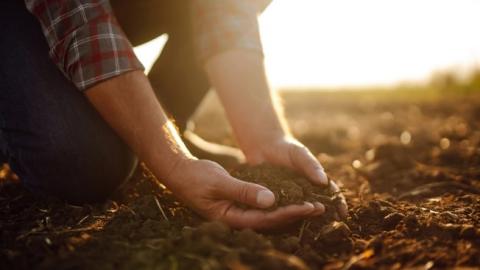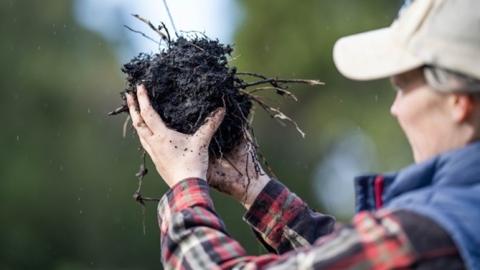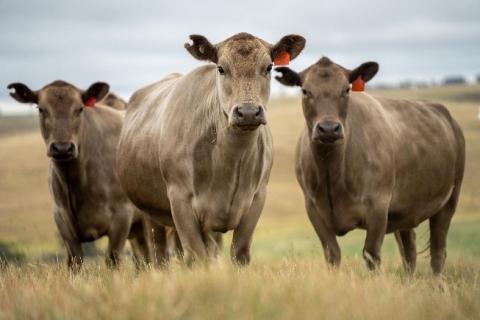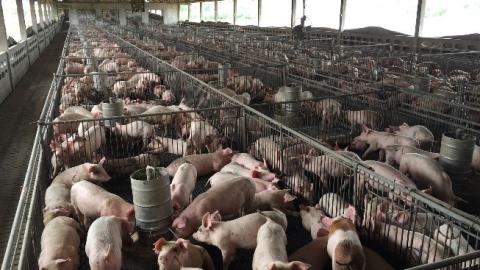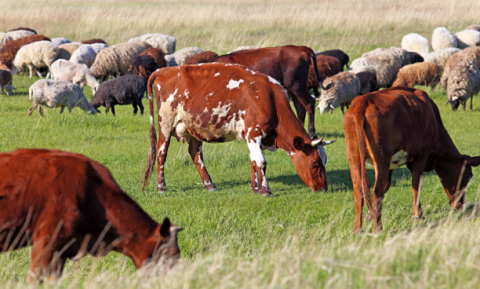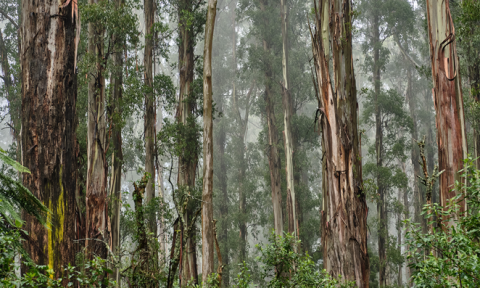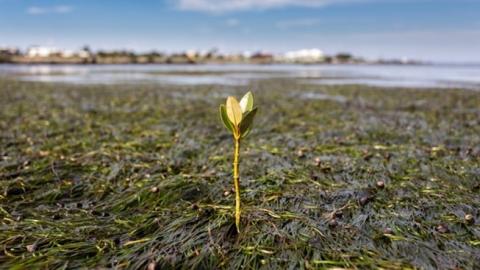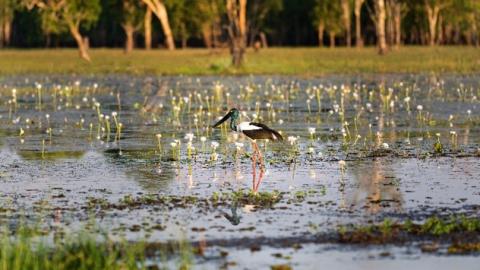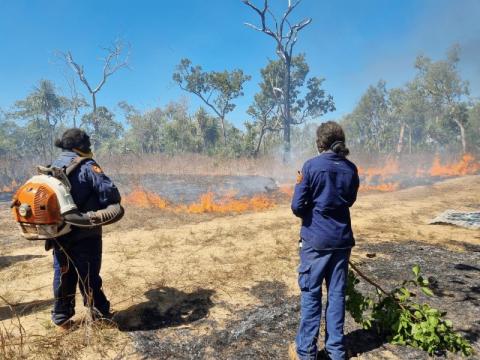As Topic 1 examined, carbon farming activities aim to reduce greenhouse gas emissions and store carbon. They also deliver economic and other co-benefits for farmers, land managers, environmental values and communities.
These co-benefits include earning ACCUs and gaining Climate Active certification, which Topics 4 and 5 examine. Many people also do carbon farming for its other co-benefits without being involved in the ACCU Scheme or Climate Active certification.
The following table shows the carbon farming activities this topic examines. These activities may deliver economic and other co-benefits.
| Group | Activity |
|---|---|
| Soil | Conservation and strategic tillage Crop and pasture management Efficient fertiliser use |
| Livestock | Reduce beef and dairy cattle and sheep methane emissions Manage piggery and dairy effluent Grazing management |
| Vegetation | Afforestation Reforestation Agroforestry Retaining existing native vegetation |
| Blue carbon | Restore wetlands, saltmarsh and seagrass Remove or modify barriers to tidal flow |
| First Nations traditional ecological practices | Cultural burning, including savanna fire management |
Soil
Maintaining or increasing soil organic carbon (SOC) helps mitigate climate change and provides many on-farm co-benefits. SOC content can be measured using laboratory techniques or calibrated soil sensors. SOC content values are used with other information to make farm management decisions. The extent to which SOC can be maintained or increased depends mainly on the type of soil, climate, existing SOC level and how the soil is managed. In general, management practices that improve SOC levels will need to be maintained to provide sustained improvements. Soil characteristics and climate will influence the effectiveness of management practices to improve and maintain SOC levels.
Activities to maintain or increase SOC are explained below. Maintaining good groundcover is a common feature of many of these activities.
Conservation tillage activities include:
- changing from intensive to reduced or no-tillage farming, minimising mechanical cultivation of the soil during sowing and harvesting
- retaining stubble after harvesting a crop for ground cover.
Strategic tillage includes remediating land by modifying landscape or landform features (such as by mechanically adding or redistributing soil). Before deciding to strategically manage soil by redistributing it, you must understand soil constraints (such as clay delving or clay spreading in the case of sandy soils).
Crop and pasture management activities include:
- planting and permanently maintaining pasture on land with no or little pasture (such as on cropland or bare fallow land)
- using legume species, which add nitrogen to the soil
- changing the stocking rate, duration or intensity of grazing.
Grazing management, which the Livestock section below examines, can also help improve pastures and soil.
Planting different crops sequentially on the same paddock (rotational cropping) or growing between main crops (cover cropping) keeps the soil covered. This helps to minimise soil erosion, improve soil fertility, restore SOC and optimise nutrients in the soil.
The Agriculture Victoria Soil Carbon Snapshot book (PDF 7.1 MB) introduces soil carbon and its role, overviews recent research and implications for land management practices and has links to sources of further information.
Precision agriculture (also called 'precision farming') involves using technology and data analysis to optimise various aspects of agricultural production, whether it concerns livestock, soil, forests or blue carbon. Applications of precision agriculture to managing SOC include:
- strategic sampling of soil to capture spatial variability and using laboratory and soil-sensing techniques for measurement and analysis
- using geographic information system (GIS) technology to store, visualise, analyse and interpret geographic data, including soil properties
- using variable rate technology to apply seed and fertiliser or a soil ameliorant at variable rates across a field, depending on the specific soil properties, historical soil performance and crop condition at a particular location.
Activities that maintain or increase SOC may also:
- improve soil health and fertility by using fertilisers appropriately and growing nitrogen-fixing legumes (such as clover) with another crop and making nitrogen available for other plants
- improve soil stability by minimising soil disturbance, helping to maintain the soil’s structure, reduce erosion and improve soil health
- increase biodiversity and ecosystem function/resilience by growing together or rotating crop and pasture species to provide a diverse habitat for a variety of organisms; or by growing perennial pasture that can suppress weeds and reduce the need for herbicides
- reduce evaporation by minimising soil disturbance, resulting in better retention of water and more efficient use of water resources.
Using nitrogen fertilisers more efficiently can help reduce nitrous oxide emissions from soils. This includes using a suitable fertiliser product type and applying fertiliser at a time and rate that meets the needs of particular crops, pastures and soil characteristics. Fertiliser use can be optimised with controlled-release or variable-rate application. GHG emissions can be reduced by using nitrogen inhibitors to slow the rate at which ammonia is converted to nitrate, so plants use nitrogen more efficiently.
There is more information about nitrous oxide, fertilisers and inhibitors on the Primary Industries Climate Challenges Centre website.
Livestock
Reducing emissions from livestock can also have productivity benefits. The potential options for reducing emissions vary with types of livestock and production systems.
These activities aim to reduce emissions from beef and dairy cattle and sheep by:
- improving growth rates and reducing the age of herds, so they produce emissions for fewer days
- culling less-productive animals, so fewer are needed for the same output
- providing a balanced, optimised diet of high-quality, easily digestible feed and supplements (such as legumes like Leucaena or Desmanthus, tannins, oils, fats and methane inhibitors (like Asparagopsis or 3-NOP)) to improve their growth and reduce methane emissions
- substituting urea supplements with nitrate supplements in the form of lick blocks so the cattle produce less methane
- improving pasture management, including by grazing management.
The main activities that manage piggery and dairy effluent to mitigate methane emissions aim to:
- avoid emissions by promoting aeration, and preventing the generation of methane
- generate biogas, which can be used to generate heat or produce electricity.
Some dairy and piggery effluent management activities are eligible to generate ACCUs under the ACCU Scheme Animal effluent management method, which is outlined in Topic 5.
Better management of piggery and dairy effluent can:
- reduce nitrous oxide emissions from the application of manure by applying it at the right place, rate and time
- reduce methane emissions by using anaerobic digestion systems to capture and use methane to produce energy
- by generating electricity on-farm, reduce the need to buy it from the grid
- improve soil fertility by using effluent as fertiliser, which also reduces farm costs and the GHG emissions that arise from the production and use of synthetic fertilisers
- improve animal welfare by making their living conditions cleaner and healthier
- improve water quality by reducing the run-off of nutrient-rich effluent that can cause algal blooms and damage to aquatic ecosystems
- help manage effluent odours
- protect community and animal health by controlling the spread of pathogens and diseases from poorly managed effluent.
Grazing management activities include:
- systematically moving livestock to different areas to prevent over-grazing
- letting the land recover after a short period of intense grazing
- monitoring the land, vegetation and livestock and changing plans as necessary.
In the right conditions, grazing management can:
- reduce methane emissions from livestock by improving the digestion and overall health of animals
- help maintain soil carbon by improving plant health and root growth
- improve soil health, stability and fertility, by allowing organic matter to build up
- improve pastures by giving them more time to recover between grazing and minimising overgrazing
- increase forage quality by giving livestock access to fresh, young vegetation in each paddock, which also improves the nutritional content of the feed and, therefore, animal health
- improve animal productivity, as livestock tend to grow more efficiently on high-quality forage, and there may be less need for supplemental feeding, reducing farm costs
- improve water use efficiency by improving water infiltration, reducing run-off, and improving water quality
- increase biodiversity and ecosystem function/resilience, as vegetation can recover between grazing periods, providing diverse habitat for a variety of organisms and helping improve ecosystem stability
- reduce manure and nutrient run-off into waterways, preventing pollution and protecting aquatic ecosystems.
Vegetation
Carbon farming activities to establish and maintain forests — areas with a large number of trees and shrubs — and other vegetation include:
- afforestation: establishing a forest on land with little or no previous tree cover (such as degraded or barren land)
- reforestation: establishing a forest on land where there has previously been a forest and where there is little or no tree cover
- agroforestry: planting and maintaining trees and shrubs around or on agricultural land, integrating trees and shrubs with crops and livestock
- retaining existing native vegetation rather than clearing it. This includes avoiding clearing native forest that’s regrown on land previously cleared for cropping or grazing, which, as we will see in Topic 5, can earn ACCUs.
Vegetation can:
- remove carbon dioxide from the atmosphere and store carbon through photosynthesis in their above-ground biomass and the soil
- reduce nutrient run-off and prevent erosion
- improve living conditions for livestock and other animals by providing shade, mitigating exposure to extreme temperatures and providing windbreaks
- attract pollinators and other beneficial species
- absorb and slow down rainwater run-off, increasing groundwater, reducing flooding risks and improving water quality
- increase income and diversify income sources by opening up opportunities for timber production, non-timber products (such as fruit, nuts and medicinal plants) and eco-tourism
- provide habitat and ecological niches for diverse plant and animal species, including threatened and endangered species, contributing to healthy ecosystems
- benefit people and communities by moderating temperatures, increasing humidity, improving air quality, reducing extreme weather impacts and providing green spaces people can enjoy and use to maintain cultural and spiritual connections to the land
- create jobs in tree planting, forest management and harvesting.
Blue carbon farming activities
Blue carbon farming can occur in coastal wetland and marine ecosystems where management practices can increase carbon stores and, in some cases, reduce emissions. These include:
- mangroves, which store carbon in their above-ground biomass and below-ground sediments, help protect coastlines and offer habitat for diverse species
- seagrasses, which also have root systems that stabilise coastal sediments
- salt marshes, which store carbon by accumulating organic matter in their soils.
The term ‘blue carbon’ draws attention to the importance of these coastal ecosystems in mitigating climate change by storing carbon and avoiding GHG emissions. These and other wetlands provide a broad range of environmental benefits, including filtering water, providing habitat for diverse species and controlling flooding.
Blue carbon farming activities include:
- removing or modifying barriers to tidal flow (such as a sea wall), resulting in the rewetting of drained or partly drained coastal wetlands and converting freshwater wetlands to brackish or saline wetlands
- planting mangrove trees in areas from which they have been removed or degraded and rehabilitating degraded areas of mangrove
- restoring saltmarshes and seagrass.
Blue carbon activities can store carbon in vegetation and soil. Introducing tidal flows to wetlands that have previously been converted to freshwater systems avoids emissions. It does this by reducing the anaerobic (without oxygen) decomposition of organic material in soils, which releases GHGs, in particular methane.
Restoring wetlands:
- stores carbon in the soil and wetland vegetation
- improves soil health by filtering and retaining nutrients
- prevents excessive run-off and reduces erosion; particularly important along the coasts as sea levels rise and wetlands are natural barriers against storm surges and tidal erosion
- improves water quality by trapping and breaking down pollutants and by reducing sedimentation
- protects and improves biodiversity by providing essential habitat for plant and animal species, including to breed, feed and nest, and by being habitat for natural predators — insects, birds, and amphibians — that help control pests on nearby agricultural land
- makes better use of salt-affected land, that is, unproductive land
- supports diversified income streams from wetland-related activities such as fishing, boating and bird watching
- promotes community collaboration, as farmers and land managers collaborate with local communities, environmental organisations and government agencies to restore wetlands, strengthening community bonds and sharing responsibility for environmental stewardship
- protects settlements and infrastructure by providing a natural buffer against flooding, absorbing and storing excess water during heavy rainfall, and reducing the risk of downstream flooding, including of nearby agricultural land.
First Nations traditional ecological practices
The traditional ecological practices of First Nations people are deeply rooted in millennia-old traditions.
First Nations people have a holistic relationship with the environment that balances land use with conservation, valuing traditional ecological and cultural knowledge and practices passed down through generations.
These practices include cultural burning, sustainable hunting and fishing, and protecting sacred sites and their associated totems. These practices promote ecological balance, reduce the risk of wildfires and contribute to the land's overall health.
First Nations-led carbon farming activities that combine traditional ecological and cultural knowledge with contemporary science are increasingly recognised as effective for environmental sustainability and carbon storage.
First Nations traditional ecological practices:
- preserve and pass on cultural traditions from one generation to the next, including knowledge, stories and rituals
- maintain a spiritual connection to Country, with practices often being guided by spiritual beliefs integral to Indigenous identities
- build community cohesion, as they involve communal decision-making and cooperation that improves the overall well-being of communities
- emphasise the sustainable use of resources so ecosystems continue to provide resources and environmental health for future generations
- improve biodiversity and ecosystems, including through traditional ecological practices, by maintaining a balance between human activities and the natural environment
- can create secure, long-term jobs, particularly for people living in remote communities
- support people and communities by improving spiritual well-being and helping build leadership skills, increasing confidence in working with public sector organisations and building partnerships
- potentially align First Nations peoples’ traditional knowledge and recent science-based farming and land management methods while also increasing community awareness about land rights
- improve food quality and community health by increasing access to traditional foods for more people
- provide economic opportunities for First Nations communities, which can potentially generate income through ACCUs by reducing emissions from uncontrolled intensive fires and enhancing carbon storage.
For thousands of years, First Nations people have done cultural burning, also referred to as fire-stick farming and cool burning. Cultural burning can be of:
- grasslands to promote new growth and reduce fuel loads, helping prevent larger, more destructive wildfires
- savanna, which is a mix of grasses and trees, to maintain them and encourage specific plant species
- woodlands to maintain their health and promote biodiversity
- rainforests to clear undergrowth and reduce the risk of catastrophic fires.
Cultural burning involves small fires lit in a mosaic pattern. This low-intensity burning reduces fuel while protecting the tree canopy, clearing the ground, flushing out animals for hunting and encouraging new growth.
Cultural burning of savanna — savanna fire management — occurs in the Northern Territory, northern Queensland and northern Western Australia. Savanna covers about 1.9 million km2 — about 23% — of the Australian continent. Here, the cycle of wet and dry seasons makes the savanna particularly prone to fire. In particular, savanna fire management involves shifting from late-dry season planned burning to burning early in the dry season, to prevent large, uncontrolled bushfires late in the dry season sweeping across the north of the country.
Cultural burning maintains a traditional method that has worked effectively for tens of thousands of years. Importantly, cultural burning, as a traditional ecological practice, is also deeply intertwined with First Nations peoples' cultural and spiritual heritage.
Cultural burning:
- reduces GHG emissions and helps store carbon by reducing the frequency and extent of large, intense fires that release large quantities of carbon dioxide and methane. It helps keep the carbon in vegetation and soil
- reduces the intensity and risks of bushfires by reducing the build-up of vegetation, and therefore the overall fuel load, slowing the spread of bushfires and decreasing the risk of their intensity and destructiveness
- improves soil health, stability and fertility, as ash returning to the soil helps replenish nutrients and helps new vegetation grow
- increases biodiversity and ecosystem function and resilience by creating mosaics of vegetation patches of different ages, providing diverse habitats for various plant and animal species
- improves habitat quality by preventing shrubs and small trees from encroaching on grasslands, helping preserve savannas as open grasslands
- improves pastures by stimulating the growth of fresh, nutritious grasses for livestock and wildlife
- helps protect life and property by reducing the intensity of bushfires
- delivers direct and indirect benefits for First Nations people, including the direct benefits of meaningful jobs on Country, independent revenue, getting back to and caring for Country and protecting cultural sites, and indirect benefits of meeting cultural obligations, strong governance, community cohesion, self-determination, pride in community and healthy Country. For more information on benefits for First Nations People, see page 65 of the Indigenous Carbon Industry Network’s 2022 Indigenous Carbon Project Guide (PDF 8.5 MB).
Other ways to reduce the carbon footprint
Other ways a farm can reduce its carbon footprint include using:
- clean, renewable energy (such as solar and wind power and biofuels), reducing reliance on fossil fuels, which can not only reduce farm operating costs but also reduce its scope 2 emissions and, therefore, its carbon footprint
- energy-efficient irrigation systems that make the most efficient use of water and minimise the use of energy, which also reduces farm costs and its carbon footprint
- organic manure from livestock: organic manure is rich in carbon, microbes and other nutrients (such as nitrogen and phosphorus) essential for carbon storage, soil health and plant growth. Using organic manure also reduces reliance on synthetic fertilisers, reducing farm costs and the farm’s carbon footprint.
The Farmers for Climate Action Climate-Smart Farming Toolkit provides information about topics including: drivers for reducing farm emissions; understanding and estimating emissions; and options for reducing emissions, including improving energy efficiency and installing renewable energy systems.

